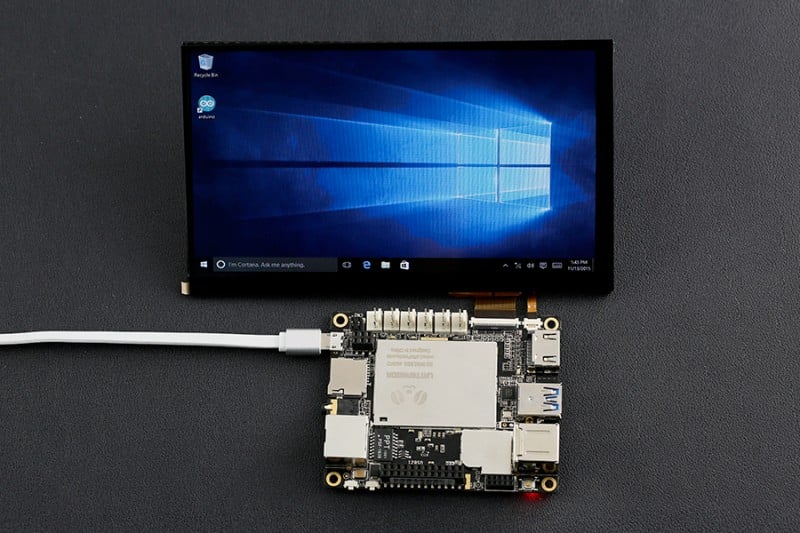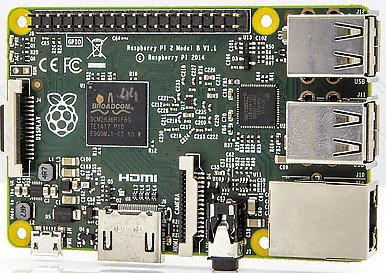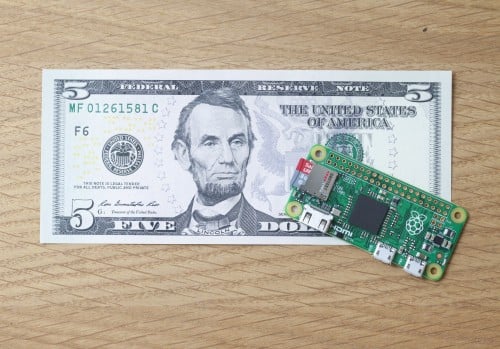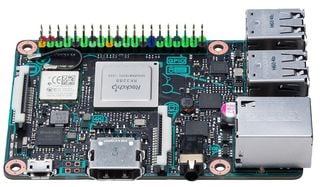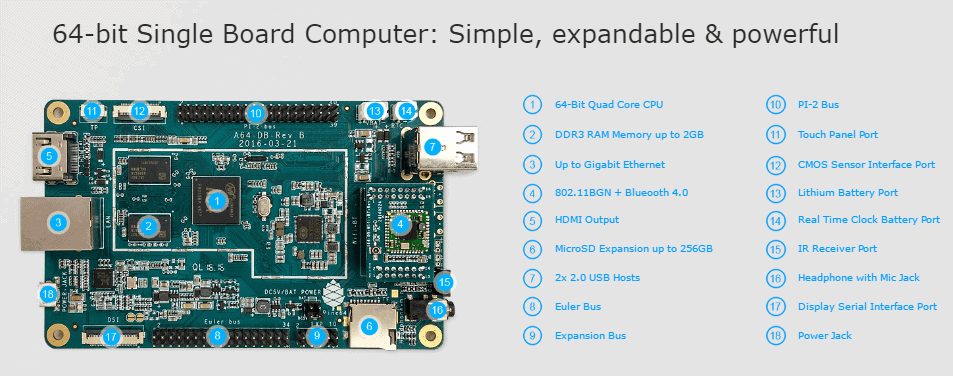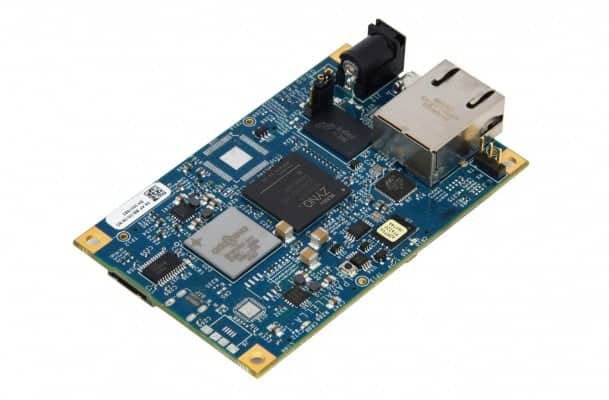With the holiday season upon us, you might not know what to get for the tinker in your life. These micro PC’s are great for any kind of project, like making a retro gaming console, media center, radios, weather station, embedded devices or just a standalone computer. So I thought it would be a good idea to make a list of some of the top micro PC’s anyone could enjoy and won’t kill your holiday budget.
Raspberry PI3:
Raspberry PI3 looks almost exactly the same as its predecessor. But while it keeps the same $35 price tag, a lot has changed under the surface. Dropping the ARM v7 architecture of the Raspberry Pi 2, this is the first 64-bit Raspberry Pi, with a quad-core 64-bit ARM Cortex A53 clocked at 1.2GHz.
SPECIFICATION
- Quad Core 1.2GHz Broadcom BCM2837 64bit CPU
- 1GB RAM
- BCM43438 WiFi and Bluetooth Low Energy (BLE) on board
- 40-pin Extended GPIO
- 4x USB 2 ports
- 4 Pole stereo output and composite video port
- Full size HDMI
- CSI camera port for connecting a Raspberry Pi camera
- DSI display port for connecting a Raspberry Pi touchscreen display
- Micro SD port for loading your operating system and storing data
Cost: $35 or you can get a starter kit for them here
Raspberry zero:
Raspberry Pi Zero runs Raspbian and all your favorite applications, including Scratch, Minecraft, and Sonic Pi. It is available at The Pi Hut and Pimoroni, and in the US from Adafruit and in-store at your local branch of Micro Center. We’ve built several tens of thousands of units so far, and are building more, but we expect demand to outstrip supply for the next little while.
SPECIFICATION:
- A Broadcom BCM2835 application processor
- 1GHz ARM11 core (40% faster than Raspberry Pi 1)
- 512MB of LPDDR2 SDRAM
- A micro-SD card slot
- A mini-HDMI socket for 1080p60 video output
- Micro-USB sockets for data and power
- An unpopulated 40-pin GPIO header
- Identical pinout to Model A+/B+/2B
- An unpopulated composite video header
- Our smallest ever form factor, at 65mm x 30mm x 5mm
Cost: $5.00 or you can get a starter kit, which will have everything you need for them here
Asus’s Tinker Board
- Quad core 1.8GHz ARM Cortex-A17 CPU
- 2GB Dual channel LPDDR3 memory
- Gigabit LAN and Bluetooth 4.0 + EDR connectivity
- 802.11 b/g/n Wi-Fi
- 4x USB 2.0 ports
- 40-pin Internal header with 28 GPIO pins
- Contact points for PWM and S/PDIF signals
- 1x 3.5mm Audio jack connection
- CSI port for camera connection
- DSI port supporting HD resolution
- 1x HDMI 2.0 port to support 4K resolution
- Micro SD port supports UHS-I
- Supports Debian OS with KODI
- Power supply: 5V/ 2A Micro USB (not included)
Cost $57 and you can get them here
PINE A64 is Single Board Computer powered by Quad-Core ARM Cortex A53 64-Bit Processor. It provides PI-2 Bus, Euler Bus and many others peripheral devices interface for makers to integrate with sensors and devices. Various Operating System (OS) are made available by open source community such Mainline Kernel, Ubuntu, Debian, Android, Remix OS, Windows IoT and many more to come.
- 1.2 Ghz Quad-Core ARM Cortex A53 64-Bit Processor. Executes both 64 and 32 Bit for scalable high performance
- Dual I/O expansion slots
- Dual Core Mali 400 MP2 Graphics card
- 2GB DDR3 Memory
- Integrated Display engine with HDMI 1.4a
- 10/100/1000Mbps Ethernet Port
Cost $29 and you can get them here
“The Parallella computer is a high performance, credit card sized computer based on the Epiphany multicore chips from Adapteva. The Parallella can be used as a standalone computer, an embedded device or as a component in a scaled out parallel server cluster. The Parallella includes a low power dual core ARM A9 processor and runs several of the popular Linux distributions, including Ubuntu.”
The Parallella is an ideal candidate for anyone interested in the field of parallel computing.
• 18-core credit card sized computer
• #1 in energy efficiency @ 5W
• 16-core Epiphany RISC SOC
• Zynq SOC (FPGA + ARM A9)
• Gigabit Ethernet
• 1GB SDRAM
• Micro-SD storage
• Up to 48 GPIO pins
• HDMI, USB (optional)
• Open source design files
• Runs Linux
• >10,000 boards shipped
Cost: $99 and you can get them here
LattePanda:

LattePanda is the first development board that can run a full version of Windows 10! It is turbocharged with an Intel Quad Core processor and has excellent connectivity, with three USB ports and integrated WiFi and Bluetooth 4.0. It also includes an Arduino co-processor that enables you to master the physical world by controlling interactive devices using thousands of plug and play peripherals. Harness the power of LattePanda to create and innovate!
- Processor: Intel Cherry Trail Z8300 Quad Core 1.8GHz
- Operation System: Pre-installed full edition of Windows 10
- Ram: 4GB DDR3L
- Storage Capability: 64GB
- GPU: Intel HD Graphics, 12 EUs @200-500 Mhz, single-channel memory
- One USB3.0 port and two USB 2.0 ports
- WiFi and Bluetooth 4.0
- Built-in Arduino Co-processor: ATmega32u4
- Video output: HDMI and MIPI-DSI
- Onboard touch panel overlay connector
- Supports 100Mbps Ethernet
- GPIO:
- 6 GPIOs from Cherry Trail processor
- 20 GPIOs from Arduino Leonardo
- 6 Plug and play Gravity sensor connectors
- Power: 5v/2A
- Dimension of board: 88 * 70 mm/ 3.46 * 2.76 inches
- Packing Size: 110 * 94 * 30 mm/4.33 * 3.70 * 1.18 inches
- N.W.: 55g
- G.W.: 100g
Cost: $89.00 to $149.00 and you can get them here
If you need any project ideas I recommend checking out these ones here.

